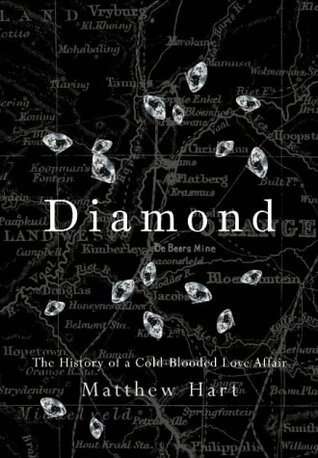
Diamond: The History of a Cold-Blooded Love Affair
Check my rate
| Main centres: | 1-3 business days |
| Regional areas: | 3-4 business days |
| Remote areas: | 3-5 business days |

| Main centres: | 1-3 business days |
| Regional areas: | 3-4 business days |
| Remote areas: | 3-5 business days |
Published by Fourth Estate., 2002, hardcover, illustrated, 287 pages, condition: as new.
The history of mans love affair with a completely useless gem. Diamonds are almost completely useless but prized above all other gems. Historically they have attracted crimes of passion and awful cold-blooded efficiency, have bedazzled the greatest filmstars and the most opulent courts, and provided the incentive for adventure, destruction and greed on a monumental scale. No one company is more identified with diamonds than the South African-based De Beers.Until the collapse of the Iron Curtain they controlled the diamond market. After the collapse, they still controlled it once they had bought up most of the diamonds emerging from the former Soviet Union. They are secretive, discreet and very, very powerful. A strike in Northern Canada could hardly seem to trouble them. Except that it prefigured a diamond rush in a territory over which they had no influence by prospectors they did not own. And the strike promised enormous riches.Here is the true story of the strike that upset the diamond kings, and with it the history of the worlds most acclaimed diamonds, the process by which they are cut, fashioned, smuggled and stolen, the legends and superstitions that are attached to them, the characters who comprise the great diamond prospectors and, above all, of the shadowy hand of De Beers for whom diamonds are forever.
This book was a real eye-opener for me. I had no idea of just how much treachery, deceit, betrayal, and bloodshed can be laid at the feet of many in the diamond industry over the years. Author Matthew Hart regales many such tales in this very well written and well researched book. We learn about switching, a common sort of theft, in which diamond sorters seek to replace a higher-value stone with a lower value which he or she has brought to work, done to take advantage of a universal practice, the control of diamond inventories often primarily by weight. More common though is outright theft, which takes place anywhere from the diamonds mines to the massive diamond sorting and sale houses in London, Antwerp, and Tel Aviv. The tales of diamonds that have been smuggled out of mines are particularly interested, which have been moved out in gas tanks, have been tapped into ears, even taken away by homing pigeons and hollow arrows fired over the fences that encircle the mines. It is a common belief in the diamond industry that if a person can touch a diamond he or she will try their best to steal it; Hart chronicles the often extraordinary lengths to which the industry seeks to keep them away from human hands.
In large part the book is the history the De Beers, a juggernaut of a cartel that for decades has controlled the sale, distribution, and price of diamonds worldwide. Hart chronicles the often Byzantine politics within De Beers and the industry as a whole, noting the rise and current possible decline of De Beers, which has within a decade went from a control of 80 percent of the rough market to around 50 percent. Increasingly sources outside the old cartel are offering alternatives to consumers and stiff competition to De Beers, which has been frustrated in attempts to control, discredit, or destroy such sources. They range from Russia, long uncomfortable with its partnership with De Beers and seeking its own way now; to Canada, rich with possibility in the newly discovered Arctic fields; to India, king of the small diamonds, specialists in producing huge volumes of affordable diamonds, able to polish to jewel-like quality diamonds once relegated to industrial use; to Australia, whose Argyle mine has produced a flood of diamonds, many of which are vital to the Indian diamond industry.
Hart does not forget the beauty of diamonds, nor the skill of the diamond cutter. An entire chapter is spent on the art and science of diamond cutting, with the author detailing the process by which the magnificent Centenary diamond was cut, an impressive stone with 247 facets that took 3 years and specially designed equipment to produce. I liked how throughout the book Hart introduced many arcane terms about the diamond industry, many of which I had never heard before, ranging from sightholders (diamond buyers with a good standing in the trade, invited by De Beers sales of rough or "sights" ten times a year at the Diamond Trading Company or DTC in London) to boxes (selling mixtures of rough put together by De Beers and sold to clients at a price set by De Beers) to gletzes (a word of Dutch origin, meaning a fracture in a diamond) to knots (places inside a diamond where the structure alters, where there different orientations in the planes of the crystal) to makes (if a stone is cut so that is a brilliant as it can possibly be, it said to be the best "make").